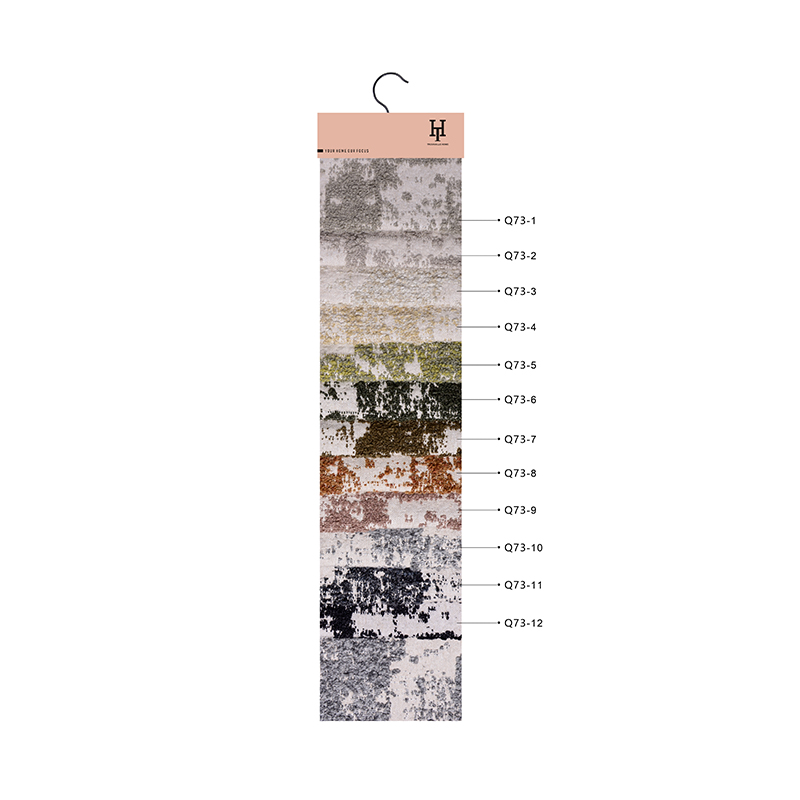How does technological innovation affect the performance and application of Home Fabrics?
Technological innovation plays a vital role in the modern Home Fabrics industry. It not only profoundly changes the performance characteristics of fabrics, but also greatly broadens its application range, bringing consumers unprecedented comfort experience and aesthetic enjoyment.
1. Material innovation: broadening the types and characteristics of fabrics
Technological innovation makes it possible to develop new fiber materials, which often have superior properties that traditional fabrics do not have. For example, recycled fibers such as recycled polyester and regenerated cellulose fibers reduce resource consumption and environmental pollution through recycling and reuse, while maintaining good physical properties and wearing comfort. In addition, bio-based fibers such as bamboo fibers and hemp fibers have gradually become popular choices for Home Fabrics due to their natural environmental protection, antibacterial and breathable characteristics. The application of these new materials not only enriches the types of home fabrics, but also improves their environmental protection, comfort and functionality.
2. Enhanced functionality: meeting diverse needs
With the advancement of science and technology, the functionality of Home Fabrics has been greatly enhanced. Through nanotechnology, microcapsule technology and other means, a special film or coating can be formed on the surface or inside of the fabric, thus giving the fabric multiple functions such as waterproof, anti-fouling, breathable, antibacterial, and anti-ultraviolet. These functional fabrics are widely used in home furnishings such as sofa covers, curtains, and bedding, effectively improving the quality and convenience of home life. For example, waterproof and anti-fouling fabrics make cleaning easier, and antibacterial fabrics help maintain the health and hygiene of the home environment.
3. Intelligent applications: opening a new chapter in future life
The rise of smart homes has also driven the development of smart fabrics. Smart fabrics can sense environmental changes or human body conditions and respond accordingly by integrating smart elements such as sensors and conductive fibers. For example, temperature-controlled fabrics can automatically adjust the warmth or heat dissipation effect according to the ambient temperature, providing users with a more comfortable physical experience; pressure-sensitive fabrics can be used in products such as mattresses and cushions to monitor the user's sleeping or sitting posture, thereby optimizing product design. These intelligent applications not only increase the added value of home fabrics, but also bring users a more intelligent and personalized lifestyle.
4. Design and manufacturing innovation: promoting personalized customization
The application of technologies such as 3D printing and digital printing and dyeing makes the design and manufacturing process of Home Fabrics more flexible and diverse. Designers can use 3D printing technology to directly print out complex patterns and textures to achieve personalized customization; while digital printing and dyeing technology can achieve high-precision and high-speed color rendering to meet the diverse needs of different customers for colors and patterns. The application of these innovative technologies makes the design of home fabrics more free and flexible, and the production cycle is greatly shortened, providing strong support for the rapid development of the personalized customization market.
5. Environmental protection and sustainable development: leading new trends in the industry
Faced with global environmental problems and resource crises, technological innovation has played an important role in promoting the home fabric industry to move towards environmental protection and sustainable development. From the selection of fiber raw materials to the optimization of the production process to the recycling of waste, technological innovation runs through all links of the entire industrial chain. By developing new environmentally friendly materials, improving production processes, and improving resource utilization efficiency, the environmental load and resource consumption in the production process of Home Fabrics can be effectively reduced, and the industry can be promoted to a more green, low-carbon and circular direction.
Technological innovation has a profound impact on the performance and application of Home Fabrics. It not only broadens the types and characteristics of fabrics, enhances the functionality and intelligence of fabrics, but also promotes the rapid development of the personalized customization market and leads the industry towards environmental protection and sustainable development. With the continuous advancement of science and technology and the continuous increase in innovation, we have reason to believe that the home fabric industry will usher in a broader development prospect and a better future.




















